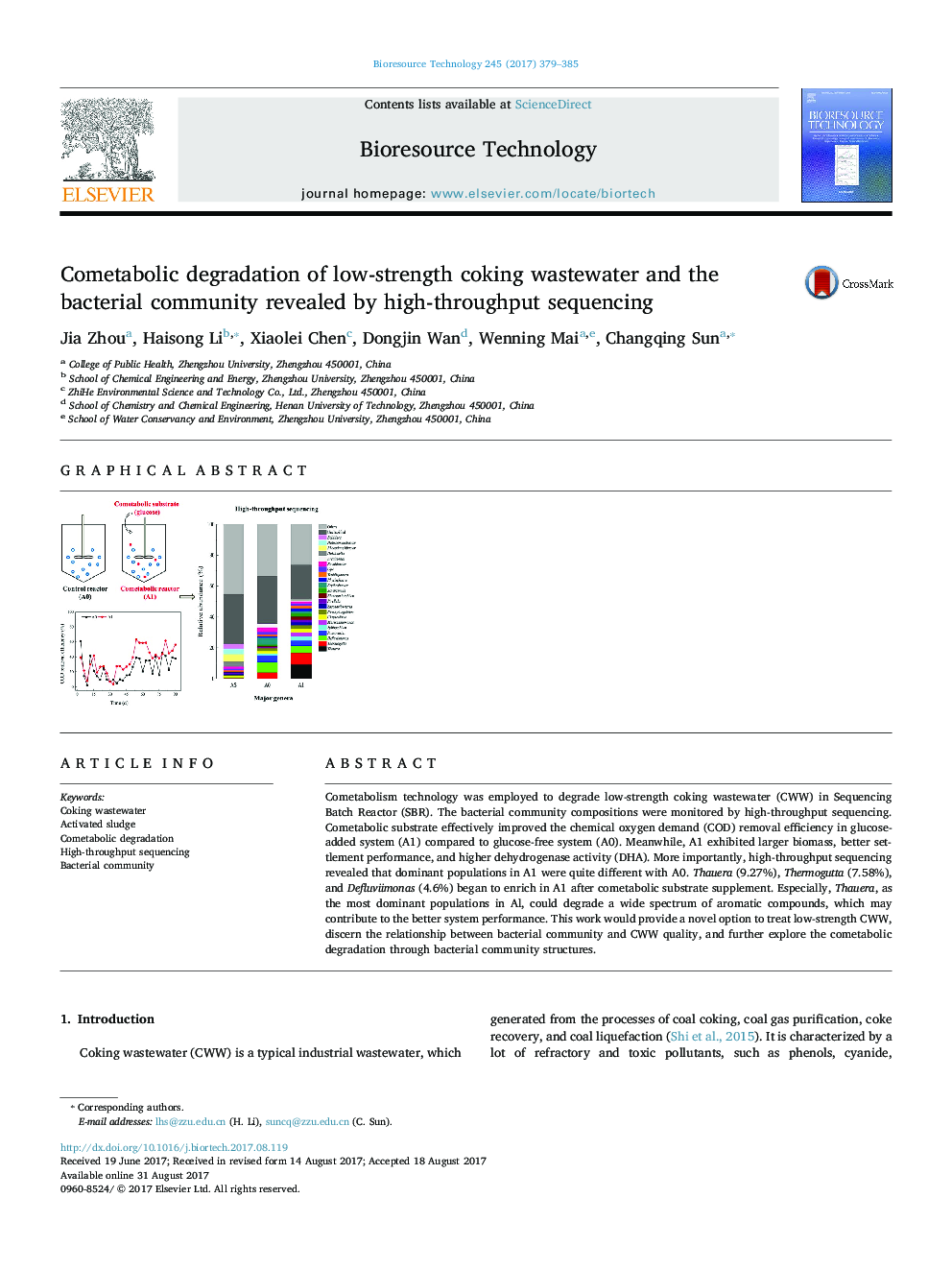| Article ID | Journal | Published Year | Pages | File Type |
|---|---|---|---|---|
| 4996773 | Bioresource Technology | 2017 | 7 Pages |
•Cometabolic substrate effectively improved the low-strength CWW treatment.•The bacterial diversity of glucose-added group was higher than glucose-free group.•Operating conditions drastically changed bacterial community.•Thauera, which can degrade aromatic compounds, enriched in cometabolic system.
Cometabolism technology was employed to degrade low-strength coking wastewater (CWW) in Sequencing Batch Reactor (SBR). The bacterial community compositions were monitored by high-throughput sequencing. Cometabolic substrate effectively improved the chemical oxygen demand (COD) removal efficiency in glucose-added system (A1) compared to glucose-free system (A0). Meanwhile, A1 exhibited larger biomass, better settlement performance, and higher dehydrogenase activity (DHA). More importantly, high-throughput sequencing revealed that dominant populations in A1 were quite different with A0. Thauera (9.27%), Thermogutta (7.58%), and Defluviimonas (4.6%) began to enrich in A1 after cometabolic substrate supplement. Especially, Thauera, as the most dominant populations in Al, could degrade a wide spectrum of aromatic compounds, which may contribute to the better system performance. This work would provide a novel option to treat low-strength CWW, discern the relationship between bacterial community and CWW quality, and further explore the cometabolic degradation through bacterial community structures.
Graphical abstractFigure optionsDownload full-size imageDownload high-quality image (138 K)Download as PowerPoint slide
